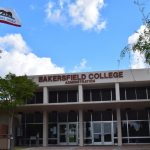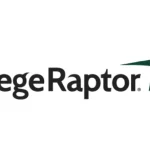Written by: Damon Vangelis, Founder & CEO
Last week, during a series of Town Halls facilitated by Ocelot, school administrators from across a number of enrollment management departments, including financial aid, admissions, financial services, and student advising, shared a number of challenges they have faced since moving to “remote work” over the past few weeks.
And they offered up ideas and best practices for others to consider.
Some of the key themes shared during the Town Halls included:
Tech Tools: Making Sure Everyone has Access
An immediate challenge for many schools over the past few weeks has been making sure everyone has tools necessary to access software, student information systems, etc. And for the “less techy” among us, getting them comfortable using the new tools. And in some cases, getting folks the equipment they need to work remotely.
One school administrator shared: “With everyone in a different place, we needed to determine who had VPN access, who has what ability to operate. We are keeping a spreadsheet of who has access to what.”
Creating Boundaries between Work and Personal
It was shared that it can be hard to keep work from becoming all-consuming. One participant noted: “It gets to a point where there is no shut off. I am still working continuously through 8 a.m. and 9 p.m. We all need time to rest and refresh. Finding ways to create boundaries is important.”
Staying Connected as a Team
One participant noted their school is using Zoom to stay connected: “We have a daily meeting at 2 pm. It helps us stay connected. It helps with all of our mental health. Cameras are a must. We need to communicate regularly because so many things have been changing by the minute. It also limits the number of emails back and forth.” Another mentioned Cisco’s Jabber communication tool, and one mentioned Google Hangouts.
Another participant added: “We use Slack to interact daily for all our questions and answers.”
One participant noted: “We have weekly team meetings but use Microsoft Teams so that the staff can chat daily, share documents and cheat sheets and stay in contact.”
Another participant noted the importance of checking in daily on other teammates’ well-being.
Communicating with Students
Clear and timely communication with students is a high priority. Email was said to be very common. Others noted that text messages (referred to as a “godsend” by one participant) and several others noted that chatbots were effective tools. And Zoom was mentioned as a tool for 1:1 virtual meetings.
Others shared that they used a gmail address to create a Google Voice number, and provided that number to students, and that when students call that number, they are able to reach staff or leave a message.
Another added a challenge when it comes to advising students “remotely:” “With our limited staff, and a limited number of virtual advising appointments available, our advisors can’t keep up with the student requests they are receiving. When we are in the office advisors can pitch in and help each other out, but working virtually they can’t do that.
Going Paperless
Working remote has forced the quick use of online, cloud-based, tools such as Google Docs. These tools are fairly intuitive to use, meaning schools can use them with very little training and support needed.
Another participant added: “We needed to quickly implement DocuSign for handling required signatures and paperwork for our dually enrolled high school students.”
With remote access, ensuring security is critical. One school noted that they have been closely watching this issue and ensuring that IT approves what they are using. One participant noted that they have begun using Virtru, an email encryption company, to enable students to send documents securely.
Navigating the CARES Act Emergency Grants to Students
Administrators shared that this is a critical initiative that they are now focusing their attention toward. They want to process this program quickly to help students. And it’s important they have a clear understanding of the federal guidelines. Schools want to create a process that is as smooth as possible, is fair, and that students do not get frustrated. Schools need to determine who is eligible and how to set up a scalable process that can be documented and compliant. Meetings and discussions are ongoing.
Remote Admissions
With an eye toward Fall admissions, several schools shared that they are creating virtual open houses using videos and technology such as Zoom. One school noted that they had recently created a Google Hangout for admitted students to foster engagement, communication, and connection. Another mentioned that they are creating an online Orientation for their summer program.














